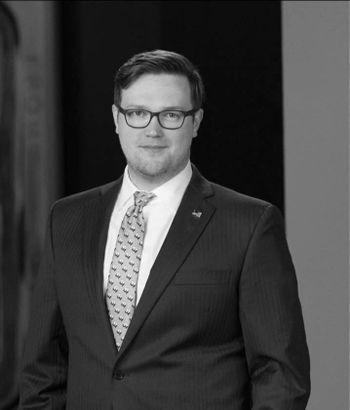ANALYSIS: When it comes to ignoring sexual assault, MSU is not an outlier
Sex abuse victims of former Michigan State University professor and Olympic doctor Larry Nassar recently brought yet another lawsuit against the university.
MSU’s administrators are, unfortunately, not alone in expelling students after questionable accusations while failing to act on the worst sex abuse.
Sex abuse victims of former Michigan State University (MSU) professor and Olympic doctor Larry Nassar recently brought yet another lawsuit against the university. Victims filed the suit in July 2023, alleging a lack of transparency as MSU refuses to turn over thousands of documents related to the Nassar case.
The case, Campus Reform reported, revealed the mismatch between MSU’s tendency to shield bad behavior and its promise of safety to students under the banner of #MeToo and overzealous Title IX administrators.
MSU’s administrators are, unfortunately, not alone in expelling students after questionable accusations while failing to act on the worst sex abuse.
The Ohio State University (OSU), the University of Virginia (UVA), and others have scapegoated students in the name of social justice while letting perpetrators of worse offenses go unpunished.
#MeToo has caused miscarriages of justice on college campuses. The movement, according to Britannica, started in 2017 when elite institutions from the media to Hollywood received a much-needed wakeup call: men can no longer use positions of power to silence victims, nor will institutions condone their behavior.
College campuses, however, have not received the wakeup call, setting their sights on the wrong targets while overlooking abuses of power. Like other social justice movements, #MeToo gives special authority and credibility to anyone claiming victimhood, a move that can sometimes victimize innocent students accused of sexual assault.
[RELATED: Scholars denounce ‘victim-centered’ approach to sexual assault]
Before #MeToo transformed allegations in the court of public opinion–from presuming innocence until proven guilty to relying on slogans such as “Believe all women,“ radical changes were already underway on campus.
The Department of Education under the Obama administration issued its infamous “Dear Colleague” letter in 2011 to explain its new Title IX guidelines.
Universities had to lower the burden of proof for sexual assault and conduct speedier investigations into allegations, and they generally didn’t allow the accused to confront his accuser – the California Supreme Court, in fact, recently ruled that “private universities are not obligated to allow students accused of intimate partner violence to cross-examine their accusers.”
Since 2011, the Federalist Society reported, “512 accused students have filed federal lawsuits” questioning the reliability of Title IX proceedings.
A former MSU medical student filed one of those lawsuits in 2020, a casualty of unfair guidelines and MSU’s overcorrection following the Nassar case. Then, at UVA, a former student expelled under similar circumstances sued the university, according to a May 2023 article on a legal communications website.
Like MSU, UVA has been slower to act when the accused is a professor.
A month after a district court heard the expulsion case, The Daily Progress reported that a UVA alumna sued the university for a Title IX investigation that took over a year. The professor accused of assaulting the alumna, The Daily Progress reports, began grooming her during a study abroad in December 2018, and she reported the relationship in February 2020.
A Title IX panel did not confirm the harassment and assault until July 2021, and the professor resigned the same month.
MSU and UVA scapegoated students while enabling faculty. In both instances, the universities worked to advance their image–pursuing a student-on-student case to look good in the backdrop of #MeToo while burying cases involving its faculty and staff.
OSU has used a different strategy to maintain its image: teaching male students that all they need for sex is ‘verbal consent’ - a tool that any male student could coerce.
Football players were acquitted of rape charges in February 2023 using a “consent video” as their defense. The video, filmed at the advice of OSU officials, depicted the alleged victim crying.
Months later, OSU attempted to deter students from suing the school for its failure to address “allegations of rampant sexual assault by a professor and athletics physician,” as previously reported.
OSU did this despite the assistant professor and team physician Richard Strauss having an alleged 177 victims.
Campus Reform’s reporting on OSU suggests the insufficiency of the sexual ethic advanced by the university.
For all its emphasis on consent, and for all its sex education and awareness around what it called, “safe-bondage practices,” OSU failed to act when sex abuse from students and employees made others unsafe.
Administrators at MSU, UVA, and OSU are enacting a perversion of #MeToo, acting only when it suits them politically.
Where does this leave us?
To begin, the distortion within the #MeToo movement on college campuses becomes glaringly evident as its initial purpose – to address grave abuses of power – gives way to an undue emphasis on consensual relationships among students.
Furthermore, universities that outwardly endorse the principles of #MeToo paradoxically foster an environment that undermines student welfare. While they promote the notion that obtaining a mere “yes” constitutes acceptable sexual conduct, they concurrently perpetuate a culture of silence around acts that are clearly unacceptable.
Soberingly, the fear harbored by female students materializes at institutions such as MSU, UVA, and OSU: Should they fall victim to sexual abuse, authority figures will care only if caring makes the administration look good.
Follow Jared Gould on Twitter for more stories like this.

